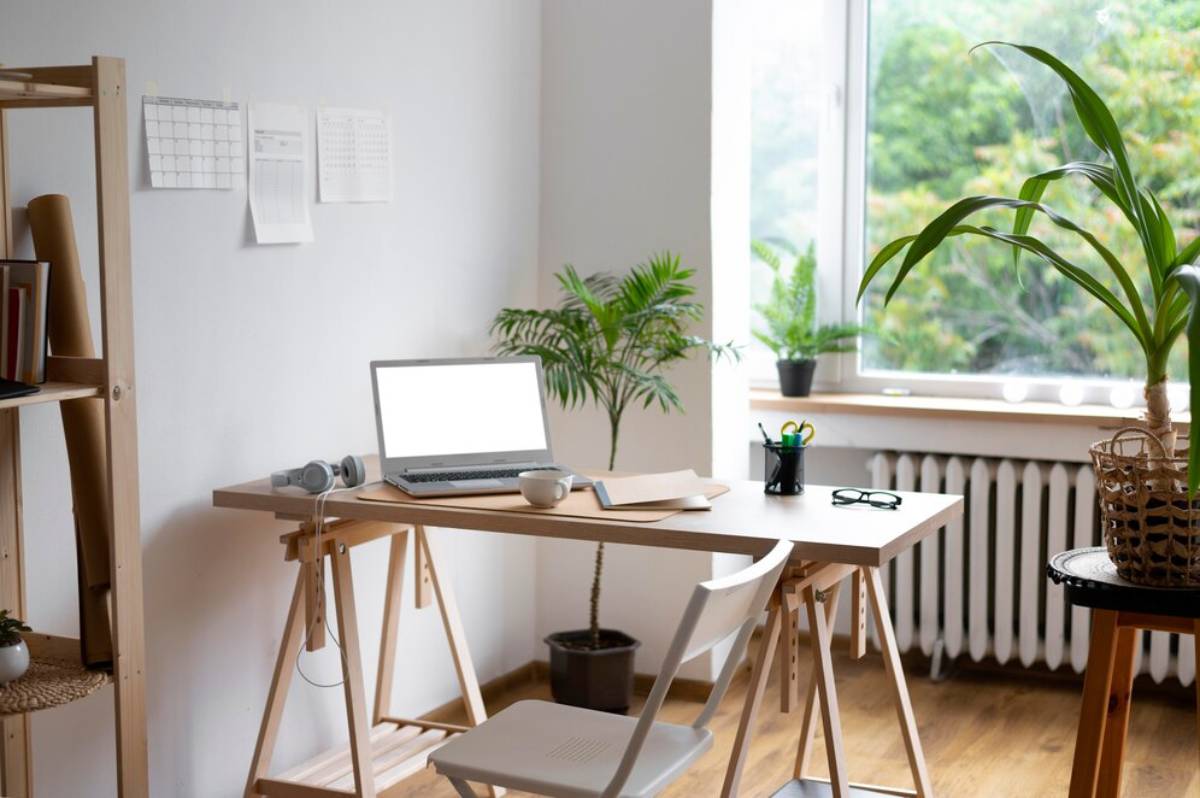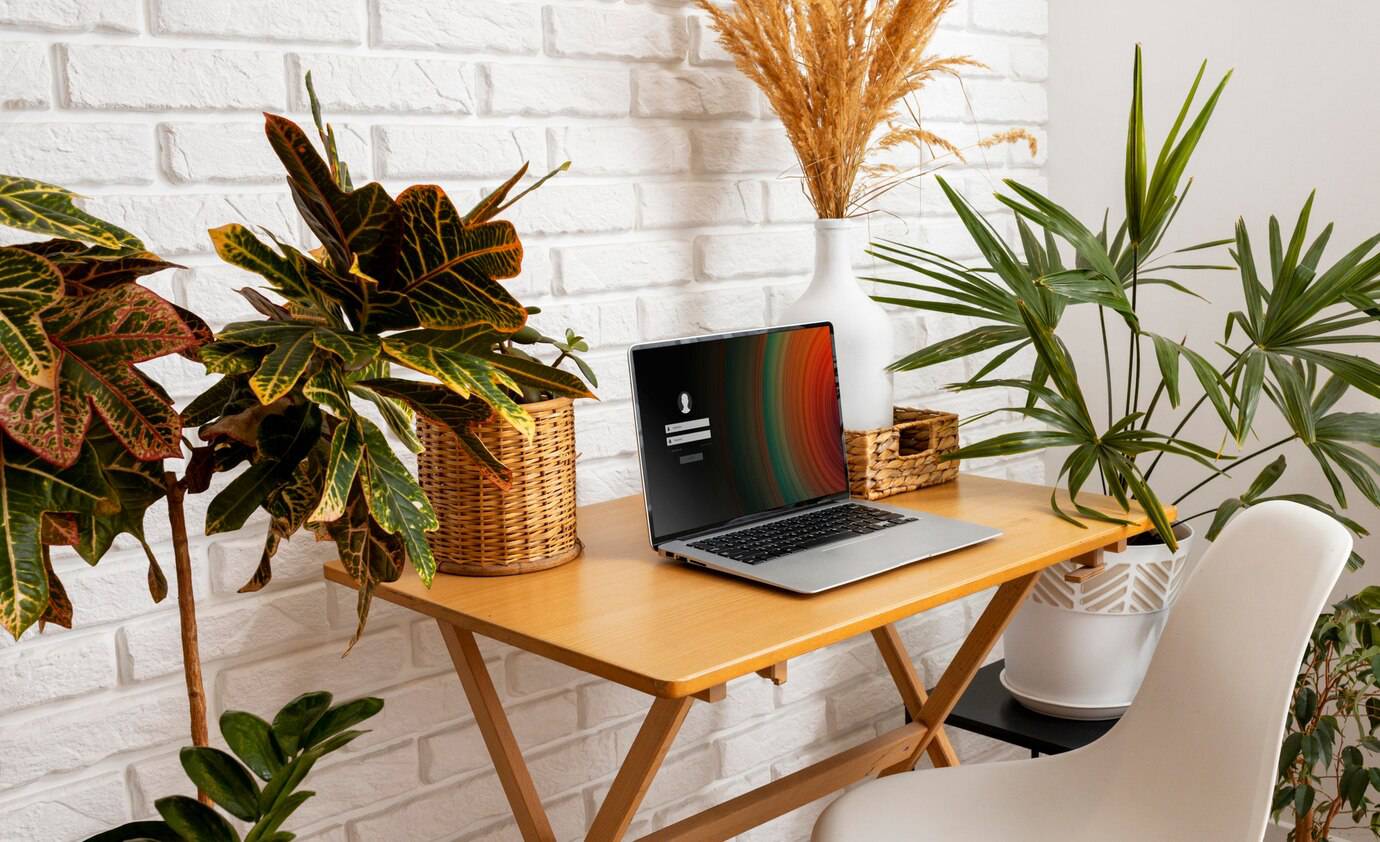
Creating a Calm and Productive Home Office
With remote work now an integral part of modern life, the home office has evolved from a luxury to a necessity. But productivity isn’t just about a desk and a chair—it’s about creating an environment that supports focus, comfort, and clarity. For many, the answer lies in Scandinavian office design. Known for its understated elegance and functional minimalism, the Nordic home office offers a blueprint for a serene yet productive workspace.
In this guide, we’ll explore how to design a home office that feels calming, intentional, and deeply efficient, using Scandinavian principles as the foundation.
Why Scandinavian Design Works for Home Offices

Rooted in simplicity, natural materials, and practical beauty, Scandinavian interiors are uniquely suited for working from home. The design ethos values light, balance, and a sense of peace—all essential ingredients for reducing stress and boosting mental clarity.
Key Principles of a Scandinavian Office:
- Minimalism without sterility: Clutter-free, but visually warm
- Natural materials: Wood, linen, wool, and stone
- Neutral tones: Whites, greys, taupes, and soft pastels
- Functional furniture: Clean lines and ergonomic use
- Connection to nature: Plants, daylight, and outdoor views
The result? A space that doesn’t just look good—it works well too.
Layout and Space Planning
The first step in creating your Nordic home office is finding the right spot. Whether you have a dedicated room or a compact corner, layout plays a major role in mood and productivity.
Best Practices:
- Face natural light if possible—position your desk near a window to reduce eye strain and boost mood
- Define the space with a rug or floating shelf if sharing a multipurpose room
- Keep walkways clear to maintain mental and physical flow
- Use vertical storage to preserve floor space and visual openness
If your space is small, opt for wall-mounted desks, fold-down surfaces, or streamlined tables with built-in drawers.
Choosing the Right Desk and Chair
Desks:
Look for simple, light-toned wood desks with minimal hardware. Scandinavian brands often offer modular systems that can expand with your needs.
Recommended Features:
- Solid oak or birch veneer
- Matte white or natural wood finish
- Built-in cable management
- Optional add-ons: drawer units or risers
Chairs:
Comfort is key, but avoid bulky leather or plastic office chairs that clash with the aesthetic. Instead, choose ergonomic seats in natural fabrics with neutral tones.
Options to Consider:
- Upholstered task chairs in grey or beige
- Wooden armchairs with seat cushions
- Bentwood or cane-back chairs with lumbar support
Your chair should support posture and movement without dominating the visual field.
Lighting for Function and Ambience
Lighting is fundamental in a productive workspace, especially in northern climates with limited daylight.
Lighting Tips for a Scandinavian Office:
- Layer your lighting: Combine overhead light with task lamps and ambient floor lights
- Use warm white bulbs (2700–3000K) for a cosy, non-glaring glow
- Opt for dimmable fixtures to adapt to changing light throughout the day
- Choose materials that diffuse light: Linen, frosted glass, or matte ceramics
Style Tip: Anglepoise or dome-style desk lamps in white, grey, or brushed metal complement a Nordic home office without distracting from the overall calm.
Storage Solutions that Keep You Focused
Clutter is the enemy of focus. But storage in a Scandinavian office must be as attractive as it is practical.
Smart Storage Ideas:
- Wall-mounted shelves in pale wood or powder-coated steel
- Neutral-toned storage boxes with subtle labels
- Floating cabinets or drawers that don’t eat floor space
- Modular bookshelves that allow open and closed sections
For everyday items, use desk trays, pencil cups, and cable boxes in muted colours and natural materials.
Colour Palette and Material Harmony
Scandinavian design thrives on tonal cohesion and soft contrast. Your office should feel visually light but not bland.
Recommended Colour Scheme:
- Base: White or warm off-white
- Secondary: Soft grey, stone, taupe
- Accents: Charcoal, pale sage, muted blush, or black
Materials to Integrate:
- Light oak, ash, or pine wood
- Linen curtains or pin boards
- Woven wool or jute rugs
- Matte ceramic or metal accessories
This palette reflects natural light and supports a grounded, tranquil energy that enhances focus.
Incorporating Nature for Calm and Creativity
Biophilic design—the integration of nature into interiors—is central to Scandinavian office culture. Studies show that plants and natural elements reduce anxiety and improve cognitive function.
How to Add Nature:
- Place a potted plant (e.g., fiddle leaf fig, snake plant, or rubber tree) near your desk
- Use a small tray of pebbles, a driftwood sculpture, or a pressed botanical print
- Incorporate greenery through desktop vases or wall planters
- Choose wood grains that echo outdoor textures
Let your workspace breathe—both figuratively and literally.
Personalisation Without Clutter
A productive workspace doesn’t have to feel sterile. Add character with restraint and purpose.
Scandinavian-Approved Touches:
- A framed minimalist line drawing
- A stack of design or travel books
- A linen-covered pin board with rotating inspiration
- A handmade mug for pens or hot drinks
Aim for fewer, better things. Rotate small items seasonally to refresh your space without accumulation.
Technology: Out of Sight, Still in Reach
Scandinavian minimalism extends to tech. Keep devices accessible but tidy.
Best Practices:
- Use a wireless charging pad in a wood or ceramic finish
- Store printers and routers in closed cabinets
- Mount your monitor or use a laptop stand to clear desk space
- Keep cables hidden with cable clips, boxes, or channels that match your desk finish
This lets you enjoy the function of modern tools without letting them dominate the aesthetic.
Scent, Sound, and Atmosphere
A Nordic home office is more than visual—it’s sensory.
To Enhance Atmosphere:
- Use a diffuser with essential oils like spruce, eucalyptus, or lavender
- Play ambient playlists or nature sounds to stay focused
- Choose a wall clock with silent movement
- Add soft textiles like wool throws or linen cushions
These subtle layers create a space where working feels like living—calm, focused, and fulfilling.
Final Touch: Routine and Ritual
Scandinavian living is built on rhythm. Establish rituals that ground your work-from-home life.
- Light a candle in the morning to begin your day
- Tidy your desk at the end of each session
- Step away for meals in a separate space
- Open a window or step outside mid-afternoon to refresh
These habits anchor your day and help maintain boundaries between work and rest.
Key Takeaway

Designing a Scandinavian office isn’t just about creating a stylish workspace—it’s about supporting your mind, your productivity, and your wellbeing. Through natural materials, soft lighting, intentional organisation, and a connection to nature, you can create a productive workspace that enhances not just what you do, but how you feel while doing it.
Work Where You Live—With Intention
The beauty of a Nordic home office lies in its balance. It’s quiet but alive, simple but layered, functional but warm. In a world of overstimulation, your workspace can become a haven of clarity and calm.
So clear the clutter, soften the light, and surround yourself with simplicity—because productivity is best when it’s peaceful.


